Michael Anthony is the executive chef of two renowned Manhattan restaurants — Gramercy Tavern and Untitled — Anthony received the 2015 James Beard Award for Outstanding Chef. He’s the author of V Is for Vegetables and The Gramercy Tavern Cookbook.
When you look at a basket of garden-fresh vegetables, is your imagination inspired by the endless culinary possibilities these fresh-picked beauties represent? Do you feel excitement and a sense of adventure as you take in their distinctive colors, shapes, and weights?
One of my goals as a chef, cook-book writer, and father is to help people discover the joys of fresh, locally grown, seasonal vegetables. I want people to be filled with fascination when they see coils of garlic scapes or lacy fronds of fennel.
The following recipes from my latest cookbook, V Is for Vegetables, will show you how to perform edible transformations, turning what may seem scraggly, rooty, and earthy into delicious, attractive dishes. You don’t need sophisticated cooking skills — just an appetite for new flavors and textures, and a willingness to explore the possibilities.
Recipes
Garlic-Scape Omelet
Garlic scapes are the tender shoots of the garlic plant that grow up and out of the stem, curling their way toward the sky. Most commercial growers remove the scapes to preserve the energy of the garlic bulbs and increase yield. For home cooks, though, they’re a real treat. Look for scapes at farmers’ markets in early summer. You can chop and prepare them like green beans or slice them thinly and sauté to bring out their delicate aroma. Scapes have a far milder taste than mature garlic.
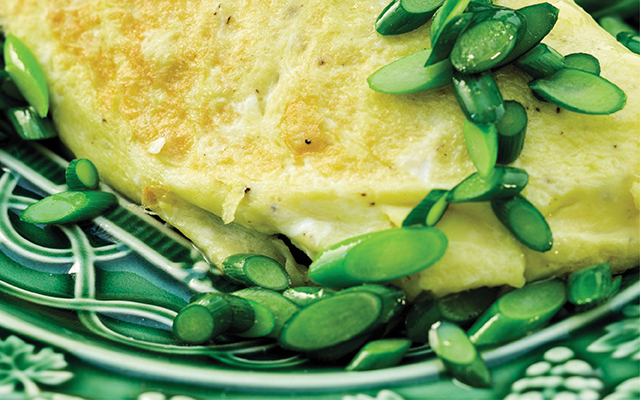
Makes one serving
Prep time: five minutes
Cook time: 10 minutes
Ingredients
- 2 tbs. butter
- 1 clove garlic, smashed
- 2 garlic scapes, thinly sliced on the diagonal
- 3 eggs
- Salt and pepper to taste
Directions
- Heat 1 tablespoon of the butter in a small skillet over medium heat. Add the garlic clove, scapes, salt, and pepper and cook until the scapes begin to soften, about two minutes. Remove the garlic clove and discard; transfer the scapes to a bowl.
- Wipe the skillet clean, and then melt the remaining tablespoon of butter in the skillet over medium heat.
- Beat the eggs well in a small bowl, and add salt and pepper. Pour the eggs into the pan and stir vigorously to create small, fine curds. As you work, scrape down the sides of the pan so the eggs cook evenly.
- Sprinkle one-third of the cooked scapes onto the eggs just before the eggs firm up. When the top is evenly set and not runny, tilt the pan away from you and fold the omelet in half with a spatula. The lip of the pan will help form the shape of the omelet as it continues to cook gently.
- Turn out the omelet onto a plate and serve topped with the remaining garlic scapes.
Warm Wilted Pea Shoots
Think beyond the pea pod. Succulent pea shoots have long been a staple in Chinese cooking, and some U.S. farmers are now growing peas especially for their shoots and leaves. Look for pea shoots in late spring, and enjoy them in any dish as a replacement for greens like spinach, Swiss chard, or kale. You can add raw pea shoots to salads for an extra kick, but wilting them really brings out their flavor.
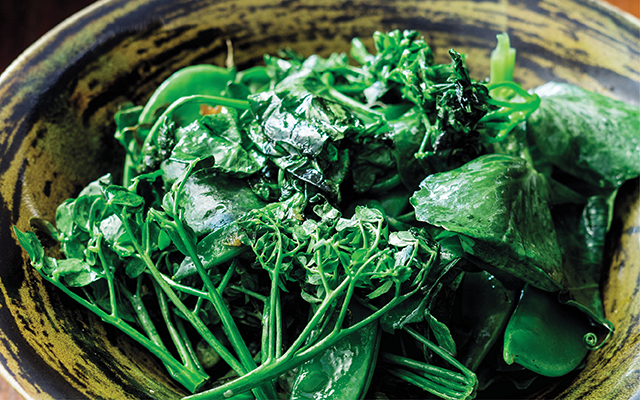
Makes four servings
Prep time: 10 minutes
Cook time: three minutes
Ingredients
- 2 tbs. olive oil
- 1 tbs. sesame oil
- 1 clove garlic, smashed
- 4 large handfuls pea shoots
- Handful snow pea pods, blanched
- Salt and pepper to taste
Directions
- Heat the olive and sesame oils in a large skillet over medium-high heat.
- Add the garlic, pea shoots, snow pea pods, salt, and pepper.
- Cook, stirring often, until the pea shoots are just wilted, about a minute. Serve warm.
Braised Radishes With Honey and Black Pepper
Braising softens radish roots and tempers their spicy rawness. The sweet honey and aromatic black pepper in this recipe complement, rather than detract from, the character of the radishes, and the browned edges of the radishes themselves add a flavorful touch.
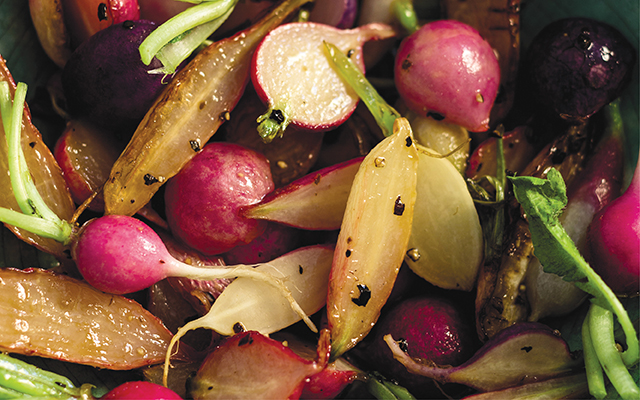
Makes four servings
Prep time: 10 minutes
Cook time: 10 minutes
Ingredients
- 2 tbs. olive oil
- 1 lb. radishes, halved
- 1 clove garlic, smashed
- 2 tbs. honey
- 1 tsp. coarsely cracked black pepper
- 2 tbs. cider vinegar
- Salt to taste
Directions
- Heat the oil in a medium saucepan over medium-high heat. Add half the radishes and all the garlic, and cook until radishes are lightly browned, about five minutes.
- Add the honey and pepper, and allow the honey to caramelize, about one minute.
- Add the vinegar, the remaining radishes, and salt. Cook until the second batch of radishes is just warmed but not soft. Serve warm.
Warm Zucchini Salad
Zucchini is more than a ubiquitous plant that grows out of control in summer. Along with other summer squashes like yellow crookneck and pattypan, it’s a symbol of Mediterranean cooking. The tender textures and light flavors are inextricably linked to summer and sun.
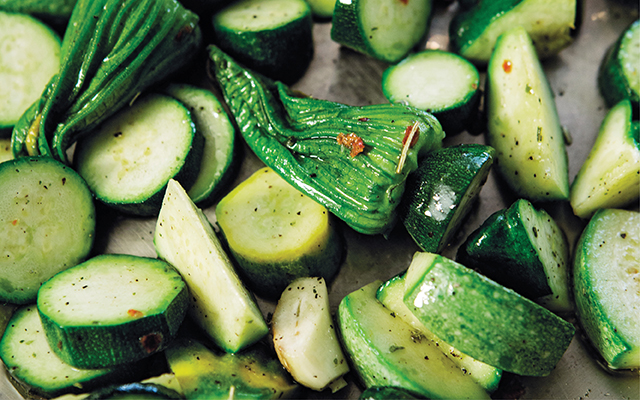
Makes four servings
Prep time: 10 minutes
Cook time: eight minutes
Ingredients
- 2 tbs. olive oil
- 1 clove garlic, smashed
- 1 lb. zucchini and other summer squashes, cut into wedges
- Pinch crushed red-pepper flakes
- Pinch dried oregano
- Pinch dried basil
- Salt and pepper to taste
- 1/2 cup fava or any shell beans, blanched, peeled, and rinsed
- 4 oz. goat cheese, crumbled
- Handful fresh basil, roughly chopped
Directions
- Heat the oil in a large skillet over medium-high heat. Add the garlic, zucchini, red-pepper flakes, oregano, basil, salt, and pepper. Cook until the zucchini is tender, about five minutes.
- Add the favas, goat cheese, and basil. Toss and serve warm. (Also delicious cooled.)
Take a Chance on a New Veggie
People often stick to the same tried-and-true vegetables because they’re familiar and therefore safe. But why not try something outside your regular veggie rotation? Here are four worth considering.
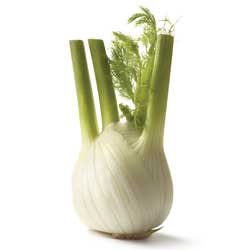
Fennel
Fennel’s unique licorice-like flavor has led growers to develop varieties with big, meaty bulbs and tender, filigreed fronds. Sliced raw bulbs are delicious in salad; you can also roast the bulbs, or braise them by simmering gently in vegetable stock for about 20 minutes. There’s no need to waste any of this nutrient-dense vegetable: The stalks and fronds can be chopped up and sprinkled over salad greens. Dry roast and grind the seeds to use as a seasoning for meat and other vegetables.

Ramps
These are wild leeks, and a celebrated first sign of spring. When the forest floor is still cold and brown, hardy ramps poke out their spade-shaped leaves. Ramps are a rare delicacy — a connection to the fragile, natural world around us. I enjoy turning them into pesto, using the leaves, stems, and bulbs.

Salsify
This long, dark-skinned root grows deep in the soil. Once it is peeled, salsify is similar in color to a parsnip, but not as sweet in flavor. Steam with a drop of lemon juice, or braise with garlic and butter — it softens beautifully.
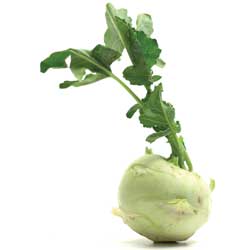
Kohlrabi
You’ll like kohlrabi once you get to know it. It has a tender heart, and despite its weirdly protuberant leaves, the young globe has no bitterness. Buy kohlrabi no bigger than a baseball, when it’s sweet and crunchy. It’s easy to peel and browns nicely when roasted.
V Is for Vegetables recipes courtesy of Little, Brown and Company. Copyright © 2015 by Michael Anthony and Dorothy Kalins Ink, LLC.
Why No Numbers? Readers sometimes ask us why we don’t publish nutrition information with our recipes. We believe that (barring specific medical advice to the contrary) if you’re eating primarily whole, healthy foods — an array of sustainably raised vegetables, fruits, nuts, seeds, legumes, meats, fish, eggs, whole-kernel grains, and healthy fats and oils — you probably don’t need to stress about the numbers. We prefer to focus on food quality and trust our bodies to tell us what we need. — The Editors
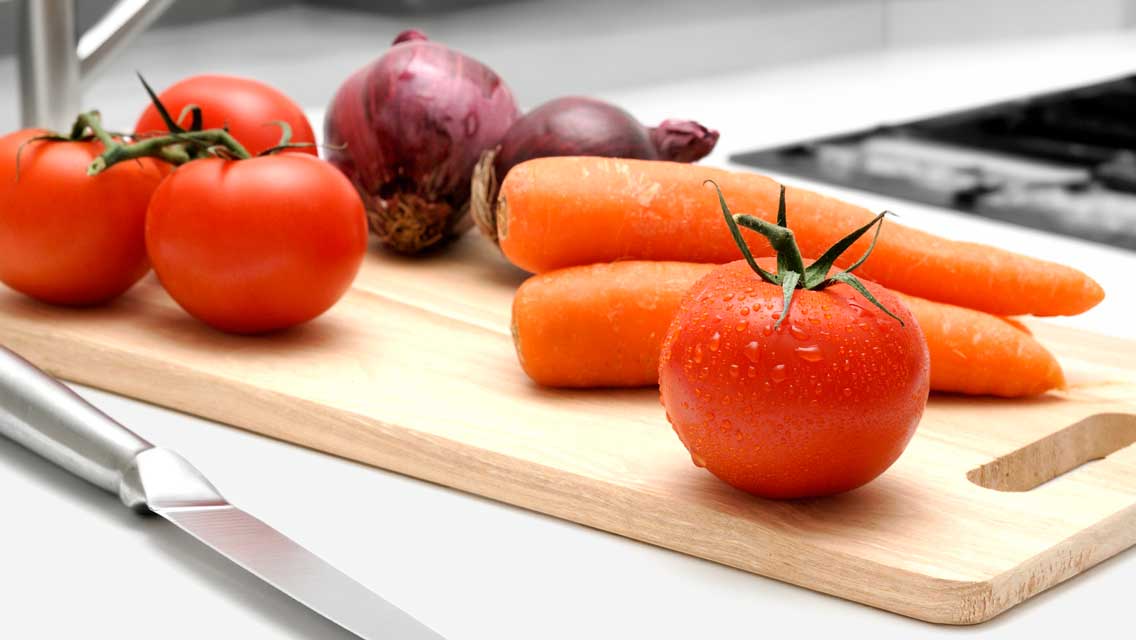
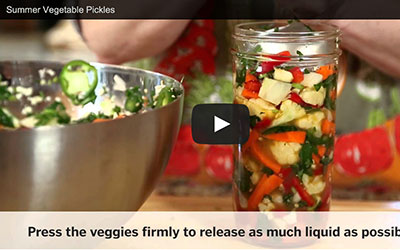
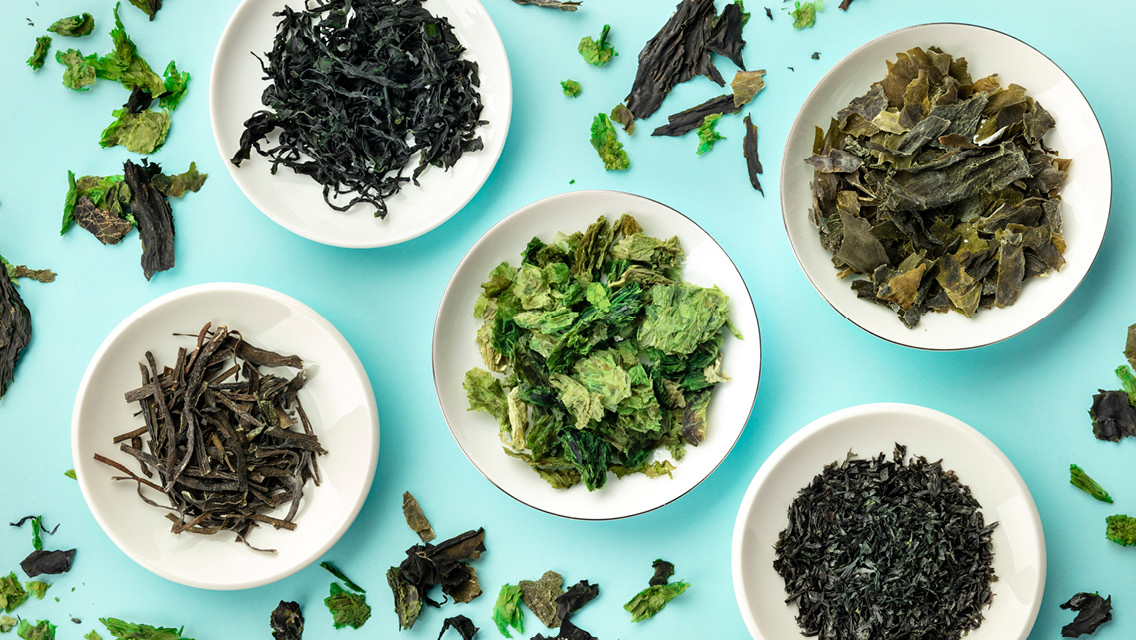
This Post Has 0 Comments